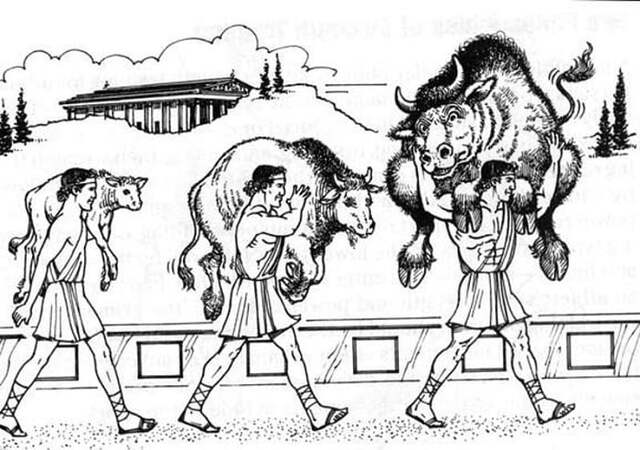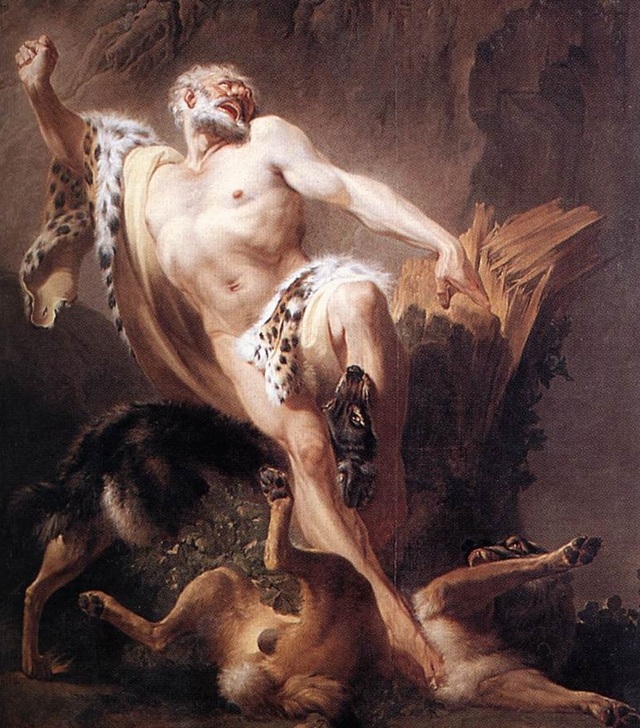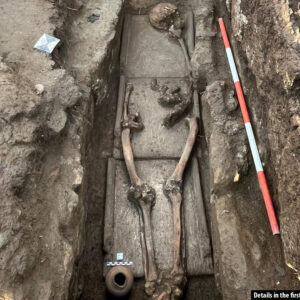Milo of Croton, a name synonymous with strength and resilience, is one of the most celebrated figures of ancient Greece. Known for his extraordinary physical feats, Milo’s legacy as the strongest person in the known world continues to resonate through time. With a training philosophy and a lifestyle that has influenced modern strength training, his story remains an iconic example of human endurance and discipline. Though his death may have been tragic, the way he lived and the feats he accomplished still serve as a testament to the possibilities of human strength and willpower.
Milo’s Rise to Fame in the Ancient Olympic Games
Milo’s journey to becoming the most formidable athlete of his time began with his success at the Ancient Olympic Games. Hailing from Croton in Magna Graecia (modern-day southern Italy), Milo’s athleticism was unmatched. He first made his mark by winning the boys’ wrestling category at the Olympic Games in 540 BC. However, his accomplishments didn’t stop there. Milo went on to secure victory in the men’s wrestling competition for five consecutive Olympic Games, dominating the sport for over two decades.
In addition to his Olympic successes, Milo also excelled at the Pythian Games, winning seven times, the Isthmian Games, where he triumphed an impressive ten times, and the Nemean Games, where he took home nine victories. His unparalleled achievements not only cemented his reputation as a champion wrestler but also contributed to his status as a national hero in ancient Greece. It’s no surprise that Milo became a legend, as his victories and feats were recorded and celebrated by many historians.

Video
Watch the video The Legendary Strength of Milo of Croton to discover the story behind one of history’s greatest feats of power.
The Training Secret Behind Milo’s Strength
The key to Milo’s exceptional strength lay in a simple yet profound strategy: incremental progress. According to ancient stories, Milo’s remarkable physical prowess was built through a unique form of progressive overload that could be considered the precursor to modern-day strength training principles. The most famous tale involves Milo lifting a newborn calf.
Each day, Milo would carry the calf on his shoulders, gradually increasing the weight as the calf grew. This training routine, which continued for four years, eventually saw Milo lifting a full-grown bull. The lesson here was simple yet effective: start light, gradually increase the load, and consistently train to build strength. This method of progressive overload is now a fundamental principle in modern weightlifting and bodybuilding, proving that Milo’s methods were not only effective in his time but have withstood the test of history.

Milo’s Incredible Feats of Strength
Beyond the training regimen, Milo’s life was full of incredible feats that seemed to defy the limits of human strength. One of the most remarkable stories of Milo’s strength involved him carrying his own bronze statue to its rightful place at Olympia. The sheer effort required to move a heavy bronze statue highlights not just his strength but his determination and commitment to demonstrating his physical dominance.
In other legends, Milo was said to be able to hold a pomegranate in his hand without damaging it, even as challengers tried to force his fingers apart. He could also burst a band fastened around his brow by inhaling air, causing his temple veins to swell, a feat of strength and control that seemed almost otherworldly. These anecdotes speak to a man who was far beyond the average physical specimen of his time and serve as enduring examples of physical mastery.
Milo’s Daily Diet and Lifestyle
Milo’s daily diet was as extraordinary as his feats of strength. It is said that he consumed a staggering 9 kg (20 lbs) of meat, 9 kg of bread, and 10 liters (18 pints) of wine daily. This diet, high in protein and calories, would have been essential in supporting his intense training routine and building the muscle mass necessary for his success as a wrestler.
While it may seem excessive by modern standards, Milo’s diet was designed to fuel his body for maximum strength. His regimen was a perfect reflection of his focus on discipline and determination. The combination of hard work, strategic training, and a caloric intake to match allowed Milo to build his legendary physique and maintain his status as the strongest man in the ancient world.
Milo’s Death: A Tragic End to an Olympian Hero
Despite his superhuman strength and indomitable will, Milo’s life came to a tragic and ironic end. The story of his death, like many legends, is surrounded by intrigue and drama. It is said that while walking through a forest, Milo came across a tree-trunk that had been split with wedges. In a display of strength, Milo attempted to pull the wedges apart, but the trunk closed on his hands, trapping him. Unable to free himself, he was ultimately devoured by wolves.
This tragic end is reflective of the Greek tendency to attribute dramatic deaths to their most famous figures, emphasizing the fragility of life and the inevitable decline that comes with age and loss of strength. The manner of Milo’s death has been the subject of artistic interpretation for centuries, with many artists portraying his death in various forms. 18th-century art, such as Joseph-Benoît Suvée’s oil on canvas, and Pierre Puget’s sculpture, explore the themes of lost strength and the fleeting nature of glory.

Milo in Modern Art and Literature
Milo’s legacy has inspired artists and writers for centuries. His death, as depicted in works like the famous sculpture by Pierre Puget, symbolizes the inevitable loss of strength and the ephemeral nature of fame. In literature, Milo’s feats are frequently referenced, from François Rabelais’ comparison of Gargantua’s strength to that of Milo in Gargantua and Pantagruel, to Shakespeare’s anachronistic mention of “bull-bearing Milo” in Troilus and Cressida.
Milo’s enduring influence in literature and art speaks to the lasting impact of his legacy. His story serves as a reminder of the power of strength, but also of the humility required to acknowledge that no one, not even the strongest man alive, is immune to the ravages of time and age.
Conclusion: The Timeless Legacy of Milo’s Strength
Milo of Croton remains an enduring symbol of strength, determination, and discipline. His story, though centuries old, continues to inspire strength athletes and bodybuilders today. The principles he followed in his training—starting light, never missing a workout, and gradually increasing the intensity—are still used by modern strength trainers. Milo’s feats, his remarkable diet, and even his tragic death remind us of the delicate balance between strength and vulnerability.
Though his life may have ended in an ironic twist, Milo’s story is far from over. It lives on in the annals of ancient history, modern art, and literature, serving as a reminder of human potential and the timeless pursuit of strength. Whether on the wrestling mat or in the realm of personal growth, Milo’s principles continue to inspire generations, showing that true strength is not just about muscle, but also about willpower and perseverance.
Video
Watch the video Milo of Croton: Ancient Greek Bodybuilding Wisdom to explore the legendary strength and training methods of this ancient icon.



